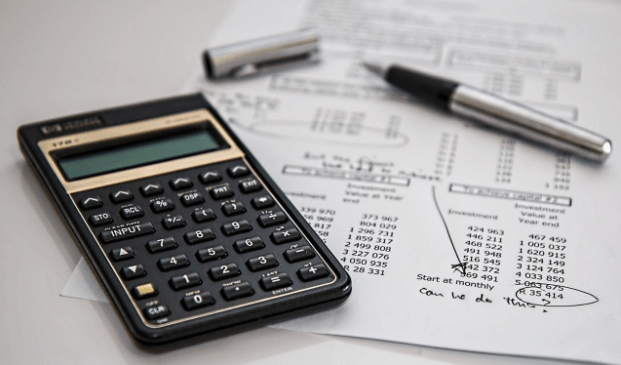We cannot control what we cannot measure, can we?
I have been keeping track of personal finances for over three years.
It’s complicated?
It seems to be not.
The hardest part for me was getting started.
There are different systems for accounting for personal finances:
the four-envelope method, the six-pitcher method, and its various variations.
There is a lot of information about these methods in the public domain.
I decided to write my research paper here.
I used to run into certain problems all the time:
I didn’t know what the money was going on
My income is inconsistent.
Long deals, projects that last from three months to a year and a half.
You seem to be making good money, but you are constantly not getting enough.
When you start counting how much money you have brought home, for example, in a year, your eyes fall on your forehead in surprise.
Can not be!
Where did we spend it all?
I didn’t know how much I could spend to make it acceptable
You want to buy something for yourself, but you doubt it.
There is money, but questions arise.
Can I afford it? Wouldn’t I regret then that I spent so much money on this thing?
Due to the problems listed above, I experienced constant stress.

You don’t know how much you spend, how long the money you earn will last if something goes wrong.
What if some clients fall off?
If some kind of crisis happens (coronavirus, hello)?
How do I start procrastinating?
How much can I save?
These and other questions, coupled with inconsistent income, constantly put pressure on me and gave rise to stress.
I lacked a sense of control and certainty.
At some point, I was finally ripe for the first step.
I just started to write down all my expenses with my wife.
Every waste.
For three months, I simply wrote down every bottle of water I bought, every cup of coffee, in general, every penny in a notebook specially set up for this.
After three months, I was already able to identify some general patterns.
Firstly, I saw that most of the expenses fall on the first days of the month and relate to the payment of bills: apartment, com. services, various subscriptions, and so on.
And these are the expenses that, with all my desire, I cannot cancel or reduce.
That is, these are compulsory expenses.
Secondly, I saw that with the exception of expenses at the beginning of the month, then they are cyclical by week.
Every week the expenses are repeated plus or minus.
Thirdly, it became clear to me in what categories these expenses could be broken down.
Food, transportation, payments, clothing, and so on.
Next, I found the arithmetic mean for three months: how much money we spend on average per month.
It should be mentioned that during these three months we did not deny ourselves anything and did not deliberately shrink in any way.
With the costs, everything more or less cleared up.
The question remains with income and savings.
How Much to Save and How?
It took me a year to finally resolve this issue for myself.
During the year, in addition to expenses, I also contributed all income.
This allowed me to calculate how much money I made in a year, divide that number by 12 and get the average income per month, which I could count as my “salary”.
This was necessary, since all accounting systems, basically, one way or another, are focused on the fact that you have a constant monthly income.
For myself, I chose the Six Envelopes system.
I adapted it a little for myself, and I ended up with not six parts (jugs, envelopes, baskets – not the point), but seven.
For some, such a system may not suit.
You can always change these parts as you like.
There are other ways as well.
The main thing is to start doing something and try to keep records somehow.
What is The Main Principle?
We take the income we receive and divide it into seven parts:
Part 1 (10% of income): savings.
That for which everything was conceived.
This is what we save and spend on nothing.
Part 2 (50% of income): daily expenses.
This includes food, household chemicals, transportation costs, and more.
Part 3 (10% of income): entertainment.
These are entertainment services, going to the cinema, cafes, restaurants and other food outside the home – in general, everything that brings pleasure and joy, but which could be dispensed with.
Part 4 (5% of income): clothing.
For my wife and me, buying clothes is a special ritual.
So special that I had to spend a separate part of my income on it.
After some impressive amount of money has been accumulated for clothes, we go and buy whatever we like for this amount, without feeling any remorse.
Part 5 (10% of income): large purchases.
We set aside this part of the income for the purchase of various electronics, furniture, dishes, and other household utensils.
This is something that is relatively expensive and does not fit in with day-to-day expenses.
When you save money for this budget line for a long time, it may turn out that the thing for which you saved up is not so much needed.
Part 6 (10% of income): gifts.
A useful piece of the budget.
When you need to give something to someone, you take money from here and don’t worry.
My wife and I also pay for gifts to each other with money from this budget.
Part 7 (5% of income): self-development.
This includes not only education and courses.
Everyone determines for himself what is development for him.
It depends on the values of the person.
We can take money from here for books, for dental treatment, for some kind of sports equipment and for many other things, including what just makes us us.
Not immediately, but over time, we managed to squeeze the maximum out of this system, adhering to certain rules:
Try not to use money from a budget line that is intended for different spending.
If you want to go to the movies, but the limit on entertainment this month has already been exhausted, then nothing fatal will happen if you take money from big purchases and go to the long-awaited film.
But it’s better not to do this and learn to live within your means.
If at the end of the month the money remains in some budget item, then it is transferred to the next month.
Thus, in large purchases, say, an impressive amount can accumulate over a year, which can be spent on something really interesting.
The percentage can change over time, depending on your priorities.
For example, a few months after the introduction of this system, we increased the percentage for savings, first to 15%, then to 20%, and last year to 50%, cutting down on daily expenses and everything else.
You can keep these 7 budgets in real envelopes, and when necessary, take money from them.
But this is not necessary at all, the envelopes may well be virtual.
The main thing is to keep this record somewhere.
You need to understand that we have set all the percentages and limits for ourselves in such a way that we feel comfortable, and my wife and I could afford the standard of living to which we are accustomed.
How Do You Keep Track of All This?
As I already wrote, I started with an ordinary notebook.
Then I went to Google Sheets.
After long agonies associated with the fact that there were too many transactions, and the table was constantly freezing, I began to transfer expenses to the adjacent tabs with the note “Archive”.
Because of this, I had to correct the formulas every time.
At some point, I decided to look for some kind of special tool for this.
Ideally, a mobile application so that you can pay in expenses as soon as I buy something, and not sit down at my laptop every evening and remember all my expenses for the day.
I was very spoiled by my Google spreadsheet with embedded categories, where all I had to do to enter an expense was to type in numbers and make two clicks.
Therefore, I did not like anything that I found in the App Store.
There are too many steps to complete to make a purchase.
Somewhere you need to drag something with your finger, which is generally inconvenient for me.
Somewhere I didn’t like the design and the abundance of gray colors.
This is how Monetika was born.
An application that my partner and I made for ourselves.
They did it with love.
The main focus is fast, smooth, and convenient depositing of expenses.
We sincerely believe that the point of such a tool is not in automation and not in the fact that the application does everything for you, but in the conscious contribution of all its expenses and income.
What we tried to do was add some aesthetics to the process.
Now I am calm in terms of my personal finances.
At any time, I can see how things are with the limits.
And about spending, I have no stress or guilt.
In general, I am clearly aware of how much my wife and I spend and what.
I know how much money we spend on groceries per week.
I know how much I can save each month without lowering my quality of life.
I know how long the financial airbag will last for us if something goes wrong.
All of this is only possible if you develop a spending habit.
In fact, it is easier than it might seem at first glance.
As I wrote at the very beginning, the hardest part is getting started.
The best place to start is today.



